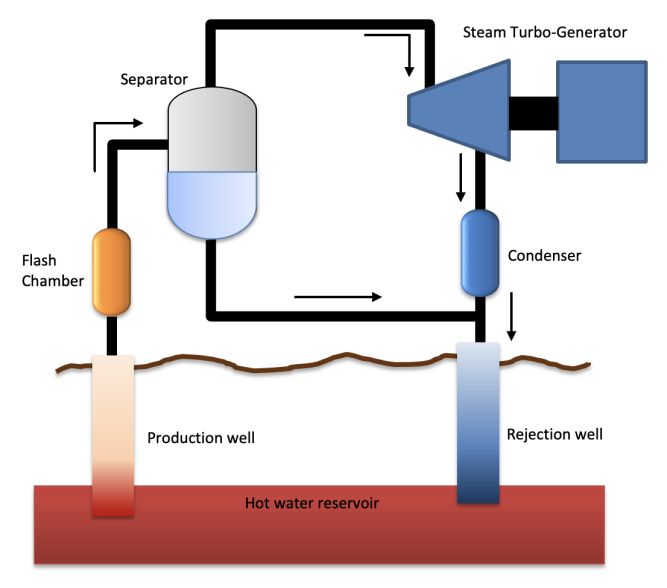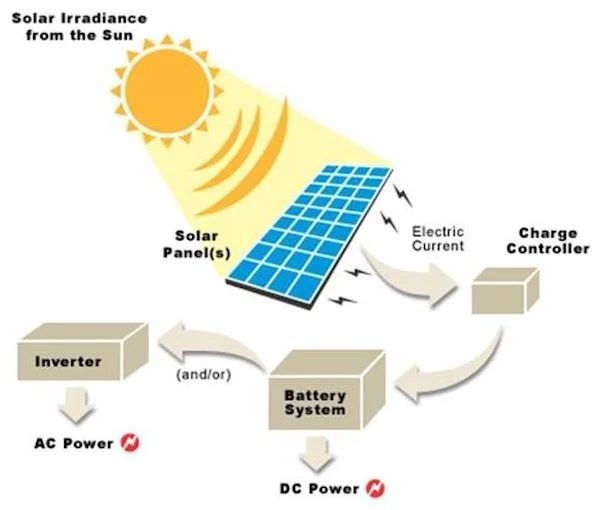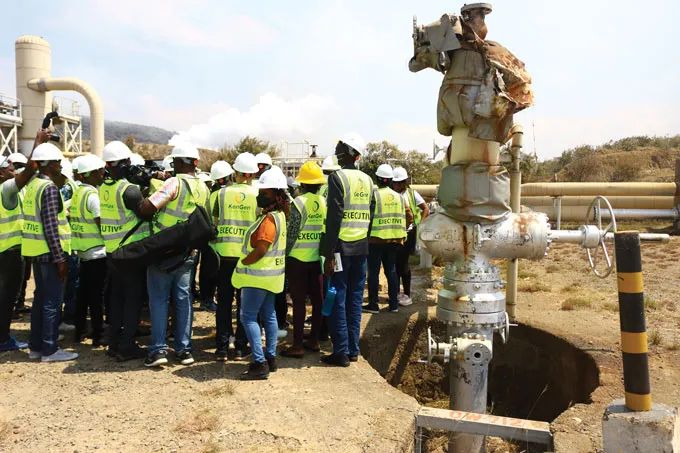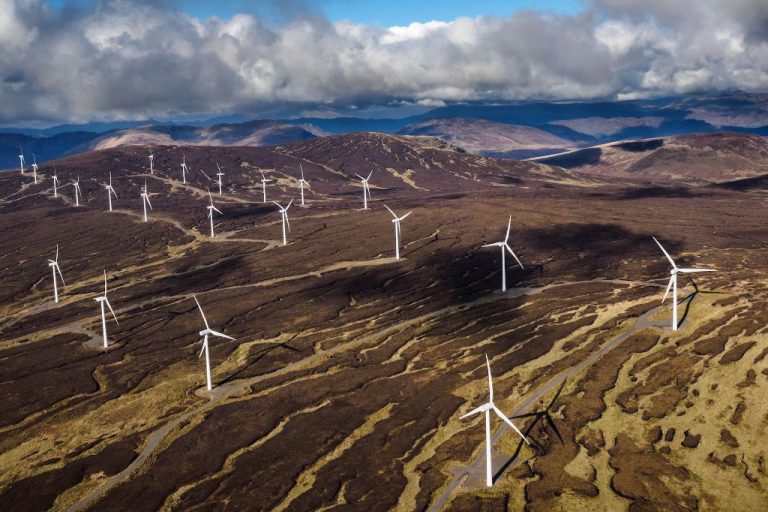What Does A Geothermal Power Plant Convert The Heat Into?
What is a Geothermal Power Plant?
A geothermal power plant is a facility that converts geothermal energy from the earth into electricity. It taps into reservoirs of hot water or steam located deep beneath the earth’s surface to drive a turbine generator and produce electricity. According to the U.S. Department of Energy, geothermal power plants “draw fluids from underground reservoirs to the surface to produce steam“. This steam then drives turbines that generate electricity.
The hot water or steam that is used in geothermal power plants is a form of renewable energy derived from the internal heat of the earth. Unlike fossil fuels that are burned to produce energy, geothermal energy utilizes naturally occurring heat that is replenished over time. The reservoirs used by geothermal plants provide a consistent and reliable flow of steam or hot water that can be harnessed to generate clean power.
How Geothermal Energy is Captured
Geothermal power plants use wells to capture geothermal energy from deep underground reservoirs in the form of steam and very hot water1. These reservoirs are located near hot spots or volcanic areas of the earth’s crust where magma comes relatively close to the surface. The wells, known as production wells, are drilled down to these underground reservoirs to tap the geothermal resource.
Once the production well reaches the reservoir, the hot water and steam are brought up through the well where it can be utilized. The high temperature steam then turns a turbine, which activates a generator to produce electricity2. After being used to generate electricity, the steam condenses into water and is either disposed of or sometimes pumped back into the underground reservoir. This process of utilizing underground reservoirs of steam and hot water makes geothermal a renewable and sustainable energy source.
Types of Geothermal Power Plants
There are three main types of geothermal power plants:
Flash Steam Power Plants
Flash steam power plants use geothermal reservoirs of water with temperatures greater than 360°F (182°C). The hot water flows up through wells in the ground under its own pressure. As it flows upward, the pressure decreases and some of the hot water boils into steam. The steam is then segregated and directed into a turbine/generator to produce electricity. Any leftover water and condensed steam are injected back into the reservoir to pick up more heat (Electricity Generation).
Binary Cycle Power Plants
Binary cycle power plants operate on water at lower temperatures of about 225°-360°F (107°-182°C). These plants use the heat from the hot water to boil a working fluid that has a much lower boiling point than water. The working fluid is vaporized in a heat exchanger and used to turn a turbine. The water and condensed steam are then injected back into the ground to be reheated (Geothermal power plants). The water and the working fluid are kept separated during the whole process, so there are little to no emissions.
Components of a Geothermal Plant
A geothermal power plant has several key components that work together to convert geothermal energy into electricity. According to geysers.com, the main components are:
- Production wells – These wells pump hot water and steam from underground geothermal reservoirs to the surface. The wells can be over a mile deep.
- Turbines – The geothermal steam rotates turbines at high speeds, similar to other power plants. The spinning turbine turns an electrical generator.
- Generators – The generators produce electricity from the rotational mechanical energy provided by the turbines.
- Condenser – The condenser converts the steam back into liquid water after passing through the turbine so it can be recycled and pumped back underground.
- Cooling tower – This extracts heat from the condenser’s recycled water and releases it into the atmosphere.

In addition to these core components, geothermal plants have piping, pumps, heat exchangers, gas extraction equipment, and other supporting infrastructure. The plant design depends on the type of geothermal reservoir and fluids extracted.
Benefits of Geothermal Plants
Geothermal energy provides many benefits as a renewable and sustainable energy source. Unlike fossil fuels, geothermal energy is constantly being produced in the earth’s core so it can provide power indefinitely without being depleted. According to the U.S. Department of Energy, “geothermal reservoirs are considered renewable because any geothermal fluids extracted are replenished by the Earth’s heat” [1].
In addition, geothermal plants emit far fewer greenhouse gases and air pollutants compared to traditional power plants that burn coal, natural gas, or oil. The U.S. Environmental Protection Agency notes that geothermal plants release less than 1% of the carbon dioxide emissions of a fossil fuel plant. Sulfur dioxide and nitrogen oxide emissions are also negligible [2]. This makes geothermal a clean, sustainable energy source.
By utilizing heat already present below the earth’s surface, geothermal provides reliable base load power without the intermittency issues of wind and solar power. Geothermal resources are available 24/7, regardless of weather conditions above ground. This provides an uninterrupted flow of renewable electricity.
Overall, geothermal energy delivers renewable, low-emission energy while supporting energy independence and security.
[1] “Geothermal FAQs.” U.S. Department of Energy. https://www.energy.gov/eere/geothermal/geothermal-faqs
[2] “Geothermal Energy.” U.S. Environmental Protection Agency. https://www.epa.gov/rhc/geothermal-energy
Limitations of Geothermal
While geothermal energy has several advantages, there are also some limitations to be aware of:
High upfront costs are one drawback. Constructing a geothermal power plant can cost millions of dollars, as it requires drilling wells deep underground and installing turbines and piping to bring the steam to the surface. The exploration and development costs are very site specific as well, adding uncertainty and risk (SolarReviews).
Another major limitation is that geothermal energy is restricted to geographical locations with suitable underground reservoirs, usually found along tectonic plate boundaries. This makes it only viable in certain regions of the world. Iceland, for example, gets about 25% of its electricity from geothermal due to its location on the Mid-Atlantic Ridge (GreenMatch).
There is also a risk of thermal pollution if geothermal fluids are not properly re-injected back underground after use. This can contaminate groundwater sources and release harmful gases if not managed carefully (TWI).
Locations of Geothermal Plants
Many geothermal power plants are located along fault lines and in areas with volcanic activity, where magma comes close to the earth’s surface. This allows geothermal energy to be more easily captured through wells drilled into the ground.1
One of the largest geothermal fields in the world is The Geysers in California, which spans an area of around 80 square miles along the Mayacamas Mountains. The Geysers is home to various power plants with a net capacity of over 750 MW, making it one of the largest geothermal complexes globally.2
Some other countries with substantial geothermal power capacity include Iceland, New Zealand, and Indonesia. Iceland generates over 25% of its electricity from geothermal sources, while Indonesia has geothermal plants like the Sarulla project, one of the largest single-contract geothermal power plants in the world.
Global Generating Capacity
As of 2022, the total worldwide installed capacity of geothermal power was about 14.9 gigawatts according to Statista.com[1]. While geothermal accounts for only a small fraction of the total global renewable energy mix, the generating capacity has been gradually increasing over the past decade. In 2010, worldwide geothermal capacity stood at just 10.4 GW, so there has been steady growth.
The countries with the most significant geothermal capacity include the United States, Indonesia, Philippines, Turkey and New Zealand. The United States leads with nearly 3.7 GW of installed capacity as of 2022. Indonesia and the Philippines follow with about 2.4 GW each[2]. Several other countries also have sizable geothermal capacity and growth potential.
Going forward, the worldwide geothermal market is expected to grow at around 5% annually according to IRENA[3]. Key drivers include technology improvements, policy support, and increased investment. If growth continues at this pace, global geothermal capacity could reach over 25 GW by 2030. However, realizing this potential will require concerted efforts in research, project development, and supportive regulations for geothermal energy.
Major Geothermal Companies
Some of the major players in the geothermal energy industry include:
Ormat Technologies (Wikipedia) is a leading geothermal company based in the United States. They develop, build, own and operate geothermal power plants around the world. Ormat has installed over 2,000 megawatts of geothermal capacity and has projects in countries like the US, Kenya, Guatemala and Indonesia.
Enel Green Power (Company Website) is an Italy-based renewable energy company owned by Enel Group. They are one of the largest geothermal energy producers in the world with over 1000 MW of installed geothermal capacity. They have geothermal projects in countries like Italy, Chile, Turkey, USA and others.
KenGen (Company Website) is a state-owned power generating company in Kenya. They are the largest geothermal power producer in Africa with over 800 MW of installed geothermal capacity from facilities like the Olkaria geothermal plant. KenGen supplies around 70% of the electricity consumed in Kenya.
Future of Geothermal
The future looks bright for geothermal energy as new technologies enable greater access to Earth’s natural heat. One promising area is enhanced geothermal systems (EGS) which can extract heat from dry rock through hydraulic fracturing. EGS allows geothermal power production in areas not traditionally suitable, greatly expanding potential sites. According to a MIT study, EGS could provide 100 GW of electricity in the U.S. by 2050, meeting around 10% of demand (The Future of Geothermal Energy, MIT, 2006).
Another emerging opportunity is co-production of geothermal energy with mineral extraction. Geothermal brines often contain valuable dissolved minerals like lithium, manganese, and zinc. New techniques can extract these minerals as a byproduct of geothermal power generation, improving project economics. The U.S. Department of Energy estimates co-production could supply over $1 billion per year in lithium, reducing the need for imports. Overall, innovative technologies and hybrid systems will enable geothermal to play a major role in the global renewable energy mix.





